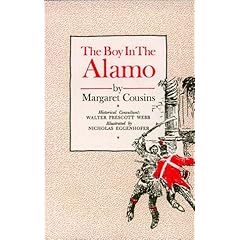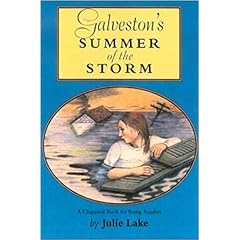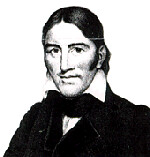I saw an issue of Texas Monthly (yes, of course, we Texans have our own national magazine) on the newsstand when I was at the grocery store, and the lead article was: How To Be Texan.
“More than forty Texas icons, customs, and facts of life, including the Bowie knife, Big Red, the two-step, the cattle guard, cedar fever, the tumbleweed, the Marfa lights, and more.”
I didn’t buy the magazine or skim through it there in the checkout line because I have the advantage of having been born in Texas and having lived here for over 40 years. I can make my own list of “Texas icons, customs, and facts of life” probably better than those Austinites who write for Texas Monthly.
And I like lists, so here’s mine of things that are quintessentially Texan..
1. Tex-Mex food. A Texan’s favorite restaurant is usually named something like Ninfa’s or Chico’s or Fat Maria’s. At said restaurant, Texans order enchiladas or fajitas or burritos or tacos. Also, non-Baptists drink margaritas.
2. SBC or Catholic. Although I have recently switched to another denomination, lots of native Texans grew up either Southern Baptist or Catholic. And those who didn’t have at least been to a Southern Baptist Vacation Bible School or youth group event–unless their priest forbade it.
3. Pick-up trucks. Texans, especially men, like pick-up trucks. I don’t know why; they just do. I think it has something to do with being able to haul lots of stuff in the back.
5. Texas words. If you really want to sound Texan, just use Texas words such as “y’all” and”fixin” and “ahced tea.” As in, “Ah’m fixin’ to have some ahced tea, Y’all want some?”
6. Texas accent. My urchins say I put on my Texas accent when I want to sound country, and I’ll admit to being able to take it off and put it on. Mostly I prefer to put it on. It’s all in the vowel sounds, no clipped-sounding dipthongs. Long i sounds like aah. The other long vowel sounds just hang on longer than they do up North.
7. Bluebonnets. These flowers are the state flowers of Texas, and they’re all over East Texas this time of year. If you’re from West Texas, you’ve seen pictures of bluebonnets and a few of them growing in yards, carefully cultivated and watered, but you have to go east to see fields like this one. Artists in Texas paint pictures of bluebonnets.
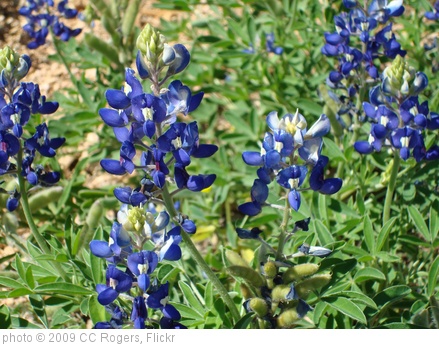
8. Hot sauce. Texans eat hot sauce or jalapenos or picante sauce or pico de gallo or salsa on most everything: hamburgers, scrambled eggs, potatoes, tortillas, hot dogs, rice, beans, anything a Yankee would put ketchup on. My mom calls burgers with ketchup on them “Yankee-burgers.”
9. Dr Pepper. Dr Pepper was invented in Texas, in Waco to be exact. I will admit that it’s not my favorite soft drink, but if you like prune juice, Dr Pepper will be right up your alley. And it is a Texas icon. (Big Red is sort of Texan, too, but as far as I know it wasn’t invented here. Or was it? See comments.)
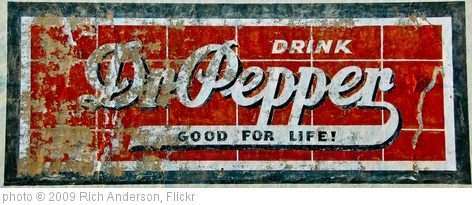
10. Rain. Real Texans value and appreciate rain even when it comes at inconvenient times because we know what it’s like to pray for rain and wait for an answer. Especially in West Texas where I grew up.
11. Homemade ice cream. Bluebell is good, but there’s nothing better than a bowl of hand-cranked homemade ice cream. It should be made from your grandmother’s recipe, hand cranked by all the big people in the family taking turns, while the little kids take turns sitting on top of the ice cream freezer on a towel to keep it still. I like plain old vanilla best, but you can get fancy and use Texas peaches.
12. Fruit. We can’t do much in the way of apples (not cold enough), but Texas grows the best peaches, grapefruit, apricots, and strawberries anywhere. Some places in Texas are beginning to grow some fine blueberries, too.
13, Pecans. Texas pecans are a great addition to any dessert, any cake, brownies, fudge, most refrigerated salads, muffins, . . . Yeah, well, I add pecans to everything until I run out at the beginning of the summer, and then I have to either buy the really expensive brand-name ones at the grocery store or wait until November for a new crop. We buy 50 or so pounds cracked, and then we shell them and put them in the freezer and use them up way too quickly. (By the way, it’s pronounced puh-CAHN, not PE-can.)
14. NASA Johnson Space Center. Not only does Engineer Husband work at JSC, but we Texans are immoderately proud of NASA and the space program and the astronauts and engineers that keep it going.
 15 The Alamo. Anyone who wants to be a Texan has to know about Jim Bowie, Colonel William Travis, and Davy Crockett and the 180+ brave men who held Santa Anna’s forces at the Alamo in San Antonio for thriteen days before the Texans were defeated and killed to the last man.
15 The Alamo. Anyone who wants to be a Texan has to know about Jim Bowie, Colonel William Travis, and Davy Crockett and the 180+ brave men who held Santa Anna’s forces at the Alamo in San Antonio for thriteen days before the Texans were defeated and killed to the last man.
16. Front porches. Most people don’t really have one, but we wish we did. I’d love a big wrap-around screened-in front porch with a couple of rocking chairs sitting out front.
17. Aggies or Longhorns. Most Texans have a preference even if they didn’t attend Texas A & M or the University of Texas at Austin. I’m a Longhorn myself; I think A & M is a cult. Hook’em Horns!
18. Willie Nelson and kicker music. Not all Texans like country music, but most of us learn to tolerate it. “Let’s go to Luckenbach, Texas, Waylon, and Willie and the boys.”
19.Cattle, sheep and goats. We used to call country boys “goat-ropers.” I never have been up close and personal with sheep, goats or cattle, but I certainly know people who have.
20.Windmills. All Texan artists are required to paint at least one picture with a windmill in it. It can be the same picture with the bluebonnets, but that’s not required.
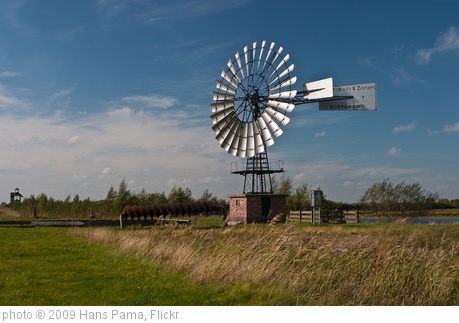
21. Mesquite. I always remember newcomers to my hometown in West Texas complaining that Texas didn’t have any trees. Well, I thought mesquites were trees, and I told them so.
22. Friday night football. It is a Texas icon, but the movie Friday Night Lights got it mostly wrong. I don’t know how to tell you what the Friday night high school football experience is like in Texas, but that movie wasn’t it.
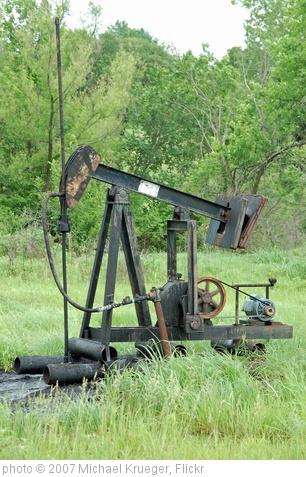 23. Oil and oil wells. Yes, if you drive around Texas, you will see working oil wells like this one. Unfortunately, none of them is mine.
23. Oil and oil wells. Yes, if you drive around Texas, you will see working oil wells like this one. Unfortunately, none of them is mine.
24. Lone Star Flag. Texas is the only state whose flag is allowed to be flown, by law, at the same height as the U.S. flag.
25. HEB. We have Kroger and Tom Thumb, but HEB (named for founder, Howard E. Butt) is the really Texan place to buy your groceries.
4. San Jacinto Day (April 21). About a month ago Texans celebrated the anniversary of the defeat of Santa Anna and the Mexican army by Sam Houston and the Texicans at the Battle of San Jacinto just a few miles from my home here in Houston. I forgot to celebrate, but as a Texan, I should have at least told my children all about it. Maybe next year we’ll go to the reenactment at the battlegrounds.
26. Boots, Saddles, and Leather Notebooks. I think I wrote about this somewhere, but all the really cool kids in my high school carried huge zip-up leather notebooks with their names hand-tooled in the leather on the front. Some of them wore boots, too.
27.Rattlesnakes. Rattlers are Texas snakes. Cottonmouths (water moccasins) are common here, too, and also very dangerous, but they’re not as well known as rattlesnakes.
28. Westerns. Read Louis L’Amour, Elmer Kelton, Zane Grey.
29. Armadillos. Sometimes you see them dead in the middle of the highway. Sad. Did you know that nine-banded armadillos always give birth to four identical young, developed from the same egg? Quadruplets.
30. 42. As far as I know, Texans and those who have learned the game from Texans are the only ones who play 42. It’s a domino game. We also play regular dominoes, but 42 is more fun.
31. Barbed wire, also known as “bob war”.
32. Roadside parks. It’s a long drive between X and Y in Texas, especially in West Texas, so the Texas Department of Transportation (affectionately known as TXDoT) has lots of places to stop along the way. “There are approximately 1,000 roadside parks maintained by the Texas Dept of Transportation. Tables, benches, grills, and rubbish incinerators are provided. Some have water.”
33. LBJ and GWB. Hey, we believe in the fairness doctrine. We gave the United States at least one of each kind of president, Democrat and Republican. You get two Bushes for the price of one.
34. Tornado Alley. OK, Tornado Alley extends up into non-Texas territory (but most of it used to be part of Texas). How many non-Texans have stood out in the country and watched a funnel cloud moving off into the distance? I did it standing in the front yard out near Mineral Wells, Texas at my Aunt Audrey’s house. And I sat inside a relative’s house in San Angelo while my daddy and a cousin tried to hold plyboard up to the window to keep a tornado from blowing the glass out. They dropped the plyboard and ran when the tornado winds came through and broke the glass anyway.
35. Juneteenth (June 19) A purely Texan holiday.
36. Chicken fried steak. Quick and easy recipe: Buy what they call “cube steaks” at the grocery store. Make one bowl full of flour, salt, pepper, and whotever other spices you want. In another bowl, mix two eggs and a cup or two of milk. Dip the steaks in the flour, then in the milk/eg mixture, then back in the flour. Fry in hot oil until browned on both sides.
37. Deer season. In Texas lots of men go deer hunting in November. It’s a tradition. They bring home venison steaks that are cooked just like chicken fried steaks.
38. Horny toads.
37. Dairy Queen. You aren’t really a Texan if you’ve never eaten at Dairy Queen. Every small town in Texas has a Dairy Queen, even though the first DQ was in Joliet, Illinois. According to
the DQ website, “Texas has the most DQ restaurants with more than 600 locations.”
38. Jalapenos. I don’t eat jalapenos (ha-la-PA-nyos), but I know someone who eats them even on his hamburgers and then breaks out into a cold sweat.
39. Six Flags. It’s not just the name of a theme park in Fort Worth; it’s also a fact of Texas history that the flags of France, Spain, Mexico, Texas, the Confederacy, and the United States have flown over part or all of the state of Texas.
40. Iced Tea. We need it iced in Texas where heat is a fact of life nine months out of the year. But we drink iced tea all year long–sweet iced tea.


41 “Drive Friendly” and “Don’t Mess with Texas.” We Texans pride ourselves on being friendly—and tough. Texas people will greet you, ask after your family, and take care of you when you’re having troubles. But don’t mess with us. We remember the Alamo as a victory, not a defeat, because the Texicans there stood and fought to the last man.
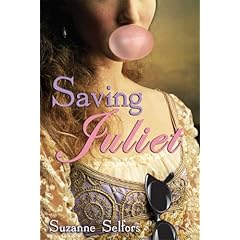 Saving Juliet by Suzanne Selfors. I had a professor once who said that every time he read Romeo and Juliet he hoped against hope that it would all end differently, that the star-crossed lovers would somehow sort it all out and live happily ever after. In Saving Juliet, Mimi Wallingford, a young actress with problems of her own, magically gets a chance to save Juliet and turn Shakespeare’s tragedy into a comedy. But Mimi, and her leading man, pop star Troy Summer, may not be able to survive long enough in dangerous sixteenth century Verona to do anyone any good. The dialog is kind of hokey, and there are some holes in the plot. Nevertheless, not bad re-imagining. Recommended by Melissa at Estella’s Revenge.
Saving Juliet by Suzanne Selfors. I had a professor once who said that every time he read Romeo and Juliet he hoped against hope that it would all end differently, that the star-crossed lovers would somehow sort it all out and live happily ever after. In Saving Juliet, Mimi Wallingford, a young actress with problems of her own, magically gets a chance to save Juliet and turn Shakespeare’s tragedy into a comedy. But Mimi, and her leading man, pop star Troy Summer, may not be able to survive long enough in dangerous sixteenth century Verona to do anyone any good. The dialog is kind of hokey, and there are some holes in the plot. Nevertheless, not bad re-imagining. Recommended by Melissa at Estella’s Revenge. Winnie’s War by Jenny Moss. The setting is a fictional town right here where I live near Friendswood, Texas. The war is World War I and Winnie’s own personal war with her grandmother and with the 1918 influenza epidemic and with growing up. This one is pitched a little younger than the two above-mentioned books; Winnie is twelve years old as the story begins. However, I would give it to middle-schoolers. Here’s an author interview with Ms. Moss at Cynsations.
Winnie’s War by Jenny Moss. The setting is a fictional town right here where I live near Friendswood, Texas. The war is World War I and Winnie’s own personal war with her grandmother and with the 1918 influenza epidemic and with growing up. This one is pitched a little younger than the two above-mentioned books; Winnie is twelve years old as the story begins. However, I would give it to middle-schoolers. Here’s an author interview with Ms. Moss at Cynsations.